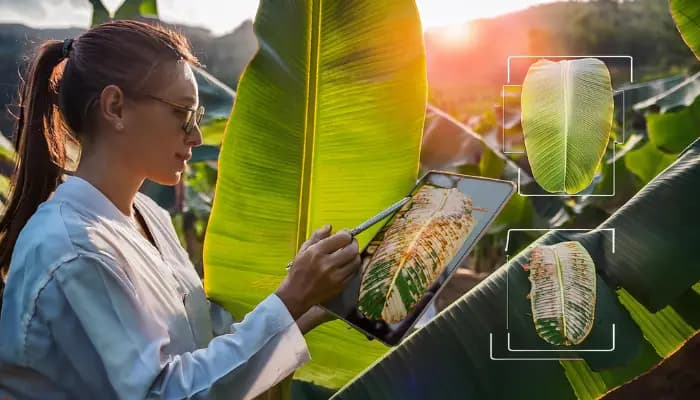- Medical Image Segmentation With UNET
- Real-Time License Plate Detection Using YOLOv8 and OCR Model
- Real-Time Human Pose Detection With YOLOv8 Models
- Customer Service Chatbot Using LLMs
- Document Summarization Using Sentencepiece Transformers
- Semantic Search Using Msmarco Distilbert Base & Faiss Vector Database
- Question Answer System Training With Distilbert Base Uncased
- Image Generation Model Fine Tuning With Diffusers Models
- Predictive Analytics on Business License Data Using Deep Learning
- Complete CNN Image Classification Models for Real Time Prediction
- Linear Regression Modeling for Soccer Player Performance Prediction in the EPL
- Insurance Pricing Forecast Using XGBoost Regressor
- Chatbots with Generative AI Models
- Nutritionist Generative AI Doctor using Gemini
- Cervical Cancer Detection Using Deep Learning
- Skin Cancer Detection Using Deep Learning
- Blood Cell Classification Using Deep Learning
- Glaucoma Detection Using Deep Learning
- Leaf Disease Detection Using Deep Learning
- Banana Leaf Disease Detection using Vision Transformer model
- Vegetable classification with Parallel CNN model
- Crop Disease Detection Using YOLOv8
- Automatic Eye Cataract Detection Using YOLOv8
- Voice Cloning Application Using RVC
- Learn to Build a Polynomial Regression Model from Scratch
- Loan Eligibility Prediction using Gradient Boosting Classifier
- BigMart Sales Prediction ML Project in Python
- Word2Vec and FastText Word Embedding with Gensim in Python
- Build Regression (Linear, Ridge, Lasso) Models in NumPy Python
- Build a Customer Churn Prediction Model using Decision Trees
- Build Regression Models in Python for House Price Prediction
- Credit Card Default Prediction Using Machine Learning Techniques
- Topic modeling using K-means clustering to group customer reviews
- NLP Project for Beginners on Text Processing and Classification
- Skip Gram Model Python Implementation for Word Embeddings
- Sentiment Analysis for Mental Health Using NLP & ML
- Time Series Analysis and Prediction of Healthcare Trends Using Gaussian Process Regression
- Build a Hybrid Recommender System in Python using LightFM
- Time Series Forecasting Using Multiple Linear Regression Model
- Build an Autoregressive and Moving Average Time Series Model
- Time Series Forecasting with ARIMA and SARIMAX Models in Python
- Build Multi-Class Text Classification Models with RNN and LSTM
- Build A Book Recommender System With TF-IDF And Clustering(Python)
- Multi-Modal Retrieval-Augmented Generation (RAG) with Text and Image Processing
- PyTorch Project to Build a GAN Model on MNIST Dataset
- Build ARCH and GARCH Models in Time Series using Python
- Human Action Recognition Using Image Preprocessing
- Time Series Analysis with Facebook Prophet Python and Cesium
- Build a Face Recognition System Using FaceNet in Python
- Build a Collaborative Filtering Recommender System in Python
- guest-post-30
- Image Segmentation using Mask R CNN with PyTorch
- Fusion Retrieval: Combining Vector Search and BM25 for Enhanced Document Retrieval
- HyDE-Powered Document Retrieval Using DeepSeek
- Graph-Enhanced Retrieval-Augmented Generation (GRAPH-RAG)
- Context Enrichment Window Around Chunks Using LlamaIndex
- Document Augmentation through Question Generation for Enhanced Retrieval
- Enhancing Document Retrieval with Contextual Overlapping Windows
- Corrective Retrieval-Augmented Generation (RAG) with Dynamic Adjustments
- Optimizing Chunk Sizes for Efficient and Accurate Document Retrieval Using HyDE Evaluation
- Sign language recognition
- ffdwf
